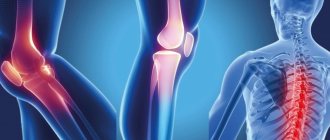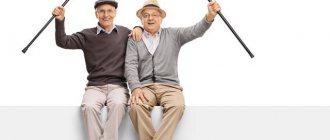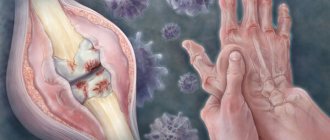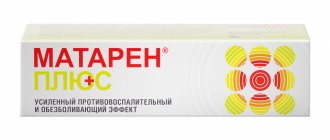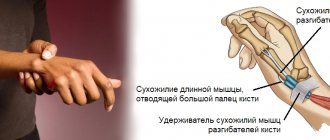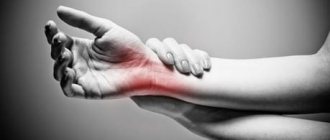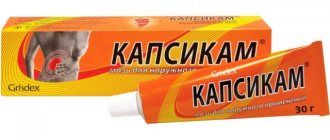Joint and muscle pain can bother everyone from time to time, regardless of their age and occupation. In some cases, such pain is physiologically normal and is a response to external influences, in others the nature of the pain is pathological in nature and it occurs against the background of some kind of disease.
If arthralgia and myalgia occur, you need to pay attention to the list of symptoms associated with pain. Don’t be surprised if discomfort occurs during long workouts in the gym or after being in an uncomfortable position for a long time. If, in addition to pain, the patient suffers from other symptoms or the pain is too severe, it is better not to endure it and consult a doctor.
Non-pathological causes of joint pain
Arthromyalgia can be non-pathological in nature. They often occur against the background of routine effects on the body and the musculoskeletal system:
- Excessive physical activity. Workouts of various types can cause muscle hypertonicity, which causes the latter to become denser and begin to adhere more tightly to the joints. As a result, the articular surfaces are compressed and the nutrition in them is disrupted, which provokes the autonomous development of a spontaneous pain symptom. Thus, pain in the joints occurs due to metabolic disorders, and in the muscles due to increased tone and soreness.
- Poor nutrition. The activity of the entire body depends on nutrition, and the musculoskeletal system is no exception. If the body does not receive enough of certain substances and microelements, conductivity in muscle structures is disrupted and regeneration processes are inhibited. Against the backdrop of all this, pain appears. In addition, with poor nutrition, patients often experience dysfunction of the visceral organs, which worsens the condition of the skin and its derivatives.
- Meteor dependence. For many people (most often older people), pain appears due to changing weather conditions. The painful sensations are twisting and aching in nature.
- Menstrual period. During menstruation, some women experience arthromyalgia. This is due to the degree of pain threshold and the intensity of the hormonal surge.
- Childhood and adolescence. Patients of this age group experience pain quite often and there is nothing strange about it. Their occurrence is explained by the process of skeletal growth and active division in bone tissue. In many children, bones grow very quickly and the muscles cannot keep up with them, which is why pain appears.
- Pregnancy. The main cause of pain is again hormonal changes. If a woman is already in later stages, when the fetus has reached a noticeable size, pain in the muscles and joints appears due to overload. A woman carries additional weight on herself every day, as a result of which the same soreness occurs.
- Injuries. This can be either microtrauma or more extensive damage. Bursa rupture, sprains, bruises and other injuries always lead to disruption of blood supply to the joints and muscles, which is why they begin to hurt. The intensity of pain depends on the degree of tissue damage.
Pain in joints and muscles caused by such factors can resolve on its own. It is enough to reduce the intensity of training, revise your diet, heal injuries or wait out some specific periods and the pain will go away by itself.
Rehabilitation and lifestyle restoration
Patients suffering from muscle pain undergo diagnosis, treatment and restoration of the body without leaving the clinic. The Kuntsevo Medical Center has its own rehabilitation department. The success of its work is based on the availability of modern highly efficient equipment, a staff of experienced specialists, and the application of the principle of an individual approach.
The technical equipment of the clinic meets modern world standards. To restore the body after an illness, manual therapy sessions are often prescribed. Its peculiarity is its effect on tissues to ensure the normal functioning of the systems of the human body. During the procedures, restriction of joint mobility is eliminated, muscles are relaxed, and minor tissue compactions are removed. Properly performed manual therapy is gentle and completely painless.
Diseases that could cause pain
Very often, pain is an accompanying symptom and occurs against the background of the development of a pathological process in one or another part of the body. Let's look at the most commonly diagnosed pathological causes of pain in joints and muscles.
Degenerative-dystrophic pathologies
Degenerative processes in bone and joint tissues often cause arthralgia and myalgia.
Diseases in this category include:
- Spondyloarthrosis. The degenerative process affects the facet, intervertebral and costotransverse joints. Most often, such a violation accompanies some other pathologies. The essence of the disease is the narrowing of the interarticular spaces, which causes the horizontal and vertical intervertebral foramina to become smaller. The nerves and vessels that pass through them are compressed. When the cervical spine is affected, patients experience pain (occurs when moving the head), hypertonicity and pain in the cervical muscles, crunches, a decrease in the natural lordosis of the cervical spine, and stiffness in movement. When the thoracic region is affected, the pain becomes more widespread and radiates to different parts of the body, there is a burning and aching pain between the shoulder blades, and disorders of the gastrointestinal tract. When the lower back is affected, patients experience loss of sensitivity below the pelvis, paresthesia, dull muscle and joint pain.
- Aseptic necrosis of the femoral head. It is characterized by the process of destruction of the bone head and hip joint. Pain in this pathology can spread to the knee joints, hip and gluteal muscles.
Spinal curvature
As you know, the spine is not perfectly straight and has several natural curvatures. Due to the fixation of the spinal column, all structures that pass through it are not compressed and normally innervate and supply blood to different parts of the body.
When curvature of the spine occurs, nerves, blood vessels, and soft tissues are compressed. Because of this, nutritional processes and the conduction of nerve impulses are severely disrupted. Externally, this manifests itself with the following symptoms:
- Movement disorders up to paresis and paralysis;
- Generalized and local pain (often they appear at the site of compression);
- Visually noticeable curvature of the spine;
- Disturbances in the activity of supra- and subdiaphragmatic organs.
Curvature can occur against the background of spinal injuries, persistent incorrect body position, weakening or atrophy of the muscular frame of the back.
- Causes of pain in joints and muscles, symptoms and treatment of diseases that cause pain
Most often, this disorder is most often diagnosed in pediatric patients.
Blood diseases
One of the common causes of arthralgia and myalgia is blood diseases. Most often these are malignant pathologies such as leukemia.
The main symptomatic manifestations of such disorders are:
- Unreasonable occurrence of hematomas in different parts of the body;
- Enlarged liver and spleen;
- Hyperthermia of a persistent nature;
- Pallor of the skin;
- Growth of lymph nodes;
- Susceptibility to the influence of infections.
Some patients experience malaise, problems with appetite, shortness of breath, and nodules on the skin.
Infectious lesion of the body
Pain and aches in bones and joints often appear in those who have a cold or viral disease. Such symptoms appear with influenza, acute respiratory infections, acute respiratory viral infections and similar diseases. Myalgia and arthralgia in such cases are accompanied by additional symptoms:
- Malaise;
- Hyperthermia;
- Fever;
- Cough;
- Sore throat;
- Head pain, nausea.
The cause of pain can also be a viral form of hepatitis. Then the patient will have yellowness of the skin, poor appetite, and heaviness in the right hypochondrium.
Neurological disorders
The main neurological cause of pain in joints and muscles can be polyneuropathy. This disorder is characterized by multiple lesions of the autonomic nervous system. Polyneuropathy is manifested by the following symptoms:
- Weakness of the arms and legs (starts in the hands and feet and then spreads throughout the limb);
- Partial or complete loss of sensitivity (usually this occurs after a period of painful sensations);
- Swelling in the limbs;
- Slow tissue regeneration;
- Attacks of severe pain of different localization;
- Dulled reflexes;
- Paresthesia, goosebumps and burning sensation in the extremities;
- Hand trembling;
- Increased sweating;
- Loss of coordination and dizziness.
Polyneuropathy usually occurs due to other disorders in the body. This could be diabetes mellitus, vitamin deficiency, trauma, degenerative diseases, hernias, autoimmune disorders, spinal compression.
Arthritis in different forms
Arthritis is not a single disease. This is a whole complex of disorders, the main characteristic of which is the inflammatory process. The cause of this phenomenon can be trauma, infections of various natures, vitamin deficiency, neurological pathologies and metabolic disorders. The following forms of arthritis are distinguished:
- Is pain in the leg muscles below the knee dangerous?
- Reactive. An inflammatory disease that develops after intestinal, genitourinary and nasopharyngeal infections. This pathology tends to mimic others. Most often it is accompanied by the following symptoms: aching joint pain, damage to visceral organs, systemic inflammation, symptoms of urogenital infection, rash on the skin and mucous membranes, conjunctivitis.
- Rheumatic. Although it is similar in name to rheumatoid arthritis, the pathogenesis of these two diseases is different. The essence of the disease lies in inflammation of the joint due to the influence of certain factors. The disease can affect both older and younger patients. It is diagnosed most often in women. Additional symptoms of rheumatoid arthritis are: swelling and redness of the skin over the joint, stiffness in movement, sharp or aching joint pain (usually migrates from joint to joint), chest pain, shortness of breath.
- Psyoriatic. People whose bodies have been affected by psoriasis suffer from this type of arthritis. The occurrence of psoriatic arthritis can be called the progression of the pathology. The main signs of the disease are generalized joint pain, local hyperthermia, stiffness in movement and swelling of the joints.
- Juvenile. The essence of the disease is chronic inflammation of the joints. The pathology is present only in adolescent children (up to 16 years). Juvenile arthritis is prone to active progression with further damage to internal organs. This pathology can lead to disability of the child.
- Gonoarthritis. Inflammation of one or two knee joints. It may manifest itself as symptoms of reactive, rheumatoid arthritis and arthrosis.
- Gouty. More commonly known as gout. It occurs against the background of consumption of a large amount of foods with purines, metabolic disorders, and kidney pathologies. A failure of metabolic processes occurs in the body, which entails the deposition of salt crystals in the joint area. As a result, a growth forms in the affected joint. The disease has several stages of development. The first is premorbid. At this stage, the patient does not suffer any particular discomfort, since the concentration of urea in the blood does not reach high levels. The next stage is intermittent. The patient experiences gout attacks, between which there is a short lull. The third stage is chronic.
Anomalies of joint structure, dysplasia and malformations
Disorders in the form of structural anomalies or malformations of the joint can be congenital or acquired. Dysplasias usually appear either against the background of these disorders or as a result of injuries in childhood.
With such pathologies, a violation of the joining of the ends of the bones is most often observed, which is why constant subluxation of the joints occurs. Such microtraumas can lead to the onset of inflammatory processes and other disorders that can progress to serious pathologies.
Therapeutic measures
If a patient develops pain in articular joints and the muscular system of the body of a vagrant nature, it is necessary to visit a doctor for consultation. Ignoring the pathological condition and the absence or untimely treatment can provoke a worsening of the pathological process. The treatment course involves the mandatory use of drugs from the NSAID group.
Volatile algia therapy is aimed at eliminating the root cause. The therapeutic regimen depends entirely on the nature and subtleties of the underlying pathological process. To eliminate systemic disorders, the following list of medications is used:
- non-steroidal anti-inflammatory drugs;
- analgesics;
- warming substances for external use in gel or ointment form.
In accordance with the specific characteristics of the provoking disease, the patient may be additionally prescribed the following set:
- antibacterial agents (mainly antibiotics that act on streptococcal flora);
- vitamin and mineral complexes;
- dietary nutrition;
- physiotherapy;
- massage;
- physiotherapy.
In the case of the root cause of rheumatoid lesions, strict bed rest is mandatory. It is important to remember that self-medication usually brings undesirable consequences in the form of disability.
Diagnosis of the root cause of pain
Depending on the diagnostic results, further pain treatment tactics will be developed.
To determine their cause, the following instrumental and laboratory studies are used:
- General blood and urine analysis;
- Blood biochemistry (the presence of infectious antigens, acute phase proteins, tumor markers is determined and liver tests and rheumatic tests are performed);
- Bacteriological cultures (if there is an infection in the body, allows you to determine its causative agent);
- CT and MRI (to identify pathological processes in the musculoskeletal system);
- Neuromyography (examines the conduction of nerve impulses in muscles);
- Bone marrow puncture (done if necessary).
The diagnostic complex can be supplemented with other studies.
Movement test to determine the source of pain
A movement test is performed by almost every doctor when examining a patient who comes in with pain in the joints and muscles. The principle of such a test is simple: if during a certain movement the pain is concentrated in a specific area, then the structures in this area are affected. An example of a motor test to determine impairments in the upper limbs.
| Pain occurs during: | What may be damaged: |
| Retracting movement of the hand back or to the side | Compression of the shoulder joint and pinching of the rotator cuff and biceps tendons between the head of the humerus and the acromion. |
| Raising your hand up | The acromioclavicular joint is affected |
| Semi-circular movement clockwise | Inflamed or damaged tendon apparatus of the infraspinatus/teres minor muscle |
| Semi-circular motion counterclockwise | Inflamed or injured subscapularis tendon |
| Flexion and supination in the elbow area | Damage to the biceps brachii tendon |
| Generalized motor dysfunction | Inflammation of the shoulder joint capsule or the joint as a whole |
| Myalgia and arthralgia in the shoulder region at rest | Plexitis, compression, compression of elements of the neurovascular bundle of the lateral triangle of the neck by an accessory cervical rib, scalene muscle syndrome, Falconer-Weddell syndrome. |
Treatment results
Treatment of muscle pain is carried out in various ways. Patients are prescribed:
- acupuncture and acupressure treatments;
- electro- and physiotherapy;
- exercise therapy;
- manual manipulations.
Special exercises are especially relevant for chronic pain that is a consequence of spinal pathologies, for example, osteochondrosis, disc herniation or spondylosis. For severe muscle tissue injuries, surgical treatment methods are used.
